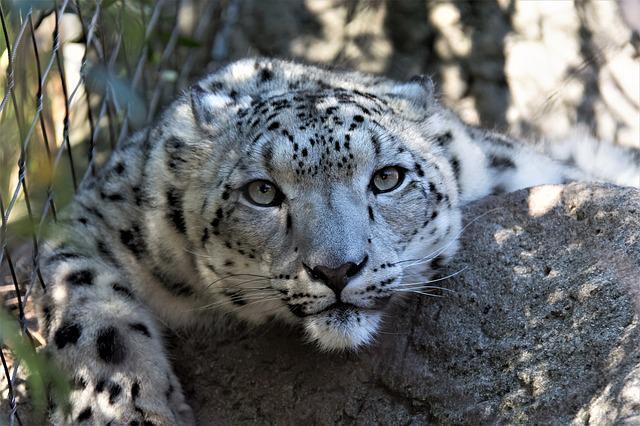World Fading Stars: 15 of the World's Most Endangered Animals in 2022

Every year, more animal species find their way to the infamous IUCN Red list. This list provides insight into the conversation status of all plant, animal, and fungi species. Although there are numerous other listings, the IUCN Red List is the most comprehensive in the world. Currently over 41,000 species are at various levels threatened with extinction. This list comprises of 13% of all birds, 37% of all sharks and rays, and 26% of mammals.
Categorizing threatened, vulnerable, and endangered animals requires a complex analysis of various factors. These factors include the speed of declination and the population reduction percentage. As a result, the IUCN may red-list an animal with a significant population number where the population is rapidly declining or has reduced by up to 50 to 70 percent.
Our Next Gen Paws list of 15 animals at risk of extinction reviews various endangered animal websites such as the IUCN red list and the WWF endangered species list 2022. Our listing focuses on animals at the highest risk of extinction. We also provide insight into bodies that are helping to protect these animals and prevent their extinction. You can visit these sites to learn more about what they are doing and how you can assist.
1. African Forest Elephant

These inhabitants of the thick tropics of West and Central Africa are currently a critically endangered species. Between 1984 and 2015, the number of African forest elephants witnessed a staggering drop of 86%. Due to the elephant’s slow gestation rate, getting this population to bounce back will take prolonged time and effort.
This effort will mean putting an end to poaching and curbing habitat loss. Elephant tusks are a highly sought-after item in southeast Asia. The surging demand is endangering elephants who have already sacrificed their land to meet a growing human population. A key non-profit pushing for the protection of these critically endangered animals is the Elephant Conservation.
2. Eastern Lowland Gorilla

The dense tropical rainforests of the Democratic Republic of Congo house a mammal population currently at risk of extinction. The Eastern Lowland Gorilla has experienced a 50% population decline in under 20 years. The primary reason for the hastened demise of this gorilla subspecies is poaching and trade. Other accelerants include degradation and loss, and ineffectual conservation efforts hampered by political instability.
The gorillas are poached as part as bushmeat hunting activities. Their meat also serves as a local delicacy and a source of medicines. Natives also believe that the lowland gorilla’s body is useful in the making of local charms.
There are ongoing conservation efforts by bodies such as the Gorilla Agreement and the International Gorilla Conservation Program. They have taken proactive measures to stop the illegal trade of these gorillas, increase the sizes of their protected habitats. They are also lobbying for the introduction of more protection policies to prevent the extinction of these animals.
3. Giant Ibis

The Cambodian national bird is a large sized animal that inhabits the lowland forests and swamps of Vietnam, Cambodia, and Laos. Previously present in Thailand, the bird is now extinct. Today there are an estimated 200 Giant Ibis birds alive today, making them one of the top 10 endangered animals in 2022.
Hunting, deforestation, and human interference constitute major threats to these species. As such groups like the Giant Ibis National Action Plan have taken steps to protect the foraging and breeding habitats of this species. They have achieved decent success with the help of local communities.
4. Sunda Tigers

In the Sunda Islands of Indonesia were three tiger subspecies collectively known as the Sunda Tigers. These inhabitants of the Sumatra, Bali and Java islands have felt the full weight of human activity on their populations. Rapid deforestation and poaching for traditional medicines and body parts have led to their extinction. Today only 500 Sumatran Tigers exist—the Javan and Bali tigers are extinct.
5. Vaquita

The smallest aquatic mammal in the world has unfortunately made it into the endangered species list 2022. The Vaquita, a small whale or porpoise, shares similarities with the Dolphin. Thanks to toxic pollutants, and fishing activities there are an estimated 10 Vaquitas remaining worldwide. The 99% drop in the population of these mammals over the last decade is due to illegal fishing.
Vaquita are worth thousands of dollars in the Chinese market due to their perceived medicinal benefits. The only place to find a Vaquita in 2022 is Mexico’s Gulf of California. Captive breeding programs to help improve the species’ numbers have been unsuccessful. However, conservation efforts currently being pushed by groups such as Save the Vaquita include the preservation of vaquita cells and gill-net bans.
6. Orangutan

Orangutans are inhabitants of the Southeast Asian tropical rainforests. Renowned for their distinctive red fur, these mammals spend most of their time on trees. This has not prevented them from becoming victims of poaching, the major cause of their demise. Today the three species of orangutans, Sumatran, Bornean and Tapanuli are now endangered.
With only 800 members left, the Tapanuli is recognized as a critically endangered specie by the WWF. The International Orangutan Foundation and the WWF are actively working towards protecting these tree-climbing mammals. Efforts include putting a halt to the pet trade, anti-poaching, sustainable forestry, and habitat preservation.
7. Hawksbill Sea Turtle

Hawksbill sea turtles stand out due to their hawk-like beaks. Their distinctive flat, disc-shaped shell with serrations at the edge, gives them a unique look that has created a demand their shells. Poachers kill these turtles for their meat and their decorative shells. Hawksbills are also an in-demand commodity among illegal pet traders. These adverse activities have spurred a population decline of this sea turtle specie by 80 percent in under 100 years.
Other threats these animals face include pollution, destruction of feeding ecosystems and habitats, and fishing equipment. Today bycatch prevention, ocean recycling and proper monitoring of hawksbill nesting sites have proven effective at conserving the population. These activities are majorly carried out by the American Oceans and the National Oceanic and Atmospheric Administration. There are an estimated 8,000 Hawksbill Sea turtles in existence today.
8. Javan Rhinoceros

Exclusively found in Indonesia’s Ujung Kulon National Park, Java, the city’s eponymous rhinos is critically endangered. Thanks to the effort Rhino Protection Units in collaboration with the WWF, the park serves as a healthy and safe environment for these mammals. Other conservatory activities include the protection of rhino native food sources by eradicating invasive plant species.
Until the introduction of these measures the Javan rhinoceros was a risk of extinction due to habitat loss and poaching. In fact, a sub-species of this rhinos were declared extinct in Vietnam in 2011. Thanks to the work of park patrol units no Javan rhino has been poached in the past 10 years. Organizations actively involved in protecting the rhino population include Save the Rhino and the International Rhino Foundation.
9. Gray Wolf

Residents of American grasslands, woodlands and deserts, the Gray Wolf is one of the most endangered animals in USA. This animal which plays a crucial role in its ecosystem is prey to traffic accidents, overhunting and legal and illegal shootings. This wolf has been the subject of recent controversy when IUCN removed the animal from its red list in 2021.
However, thanks to the intervention of environmental groups, the Gray wolf is back on the red list. Unfortunately, this brief delisting led to a mass killing of Gray wolves in the United States depleting its population. Save Our Wolves is an organisation leading the conservation effort to protect these animals.
10. Irrawaddy Dolphin

A key endangered animal fact that is largely ignored by governments is the role of illegal fishing in the extinction of aquatic life. Dolphins are a prime victim of this human activity. Today the Irrawaddy Dolphin, resident in South and Southeast Asia has only 92 members left.
This mammal is a major attraction, drawing tourists the world over. Sadly, their existence is affected by habitat loss, contamination and degradation and reduction in food sources. Key organizations working to help protect this species is Endangered Species International, WWF, and Cambodia’s Fisheries Administration.
11. Koalas

The Koala is one of the most popular endangered animals in Australia. Its popularity stems from its cultural significance to the Australian Aborigines. Wild koalas inhabit most of Australia’s bushland owing their survival to eucalyptus. The rapid clearing of eucalyptus forests and bushlands has endangered this species.
This mass habitat loss aided by human interference, disease, food, habitat contamination, food scarcity and overcrowding, has put the Koala at risk of extinction. Today there are roughly 43,000 koalas in existence. Organizations such as the Australian Koala Foundation are helping to preserve habitats and provide treatment to these animals.
12. Bluefin Tuna

Fast and large, the bluefin tuna are predators who traverse all of the word’s oceans. As such, we found it tough obtaining an accurate population status of this species for our endangered species 2022 list. Our metrics for population size is therefore, the stock assessment model.
The primary threat to the bluefin tuna is overfishing by humans who find this sushi fish a delicacy. As such conservationists such as the Bluefin Boycott are helping to preserve the bluefin population. Many countries and commissions have also introduced catch quotas and harvest requirements to limit the fishing of this fish species.
13. Tigers

As top predators, Tigers play a crucial role in maintaining the balance, health, and functionality of their ecosystem. Unfortunately, this species is now endangered with roughly 3900 remaining worldwide. Thanks to the efforts of the WWF, the Wildlife Conservation Society, and the Global Tiger Initiative, 80% of tigers now live in WWF supported habitats. Although tiger populations are rising in Nepal, Bhutan, Russia and China, a lot more effort is required to improve their southeast asia population.
14. Asian Elephants

Like the African Forest Elephant, the Asian Elephant entered endangered animal list in 1976. Major reasons for the rapid decline of their population is hunting for their meat and the ivory trade.
Despite the prohibition of commercial trade in Asian elephants and their parts by the ESA and CITES, the illegal ivory trade is still ongoing. As such the population of Asian elephants has within the past 75 years, experienced a 50% decline. There may be as little as 20,000 Asian elephants in the world today.
15. Snow Leopards

There may be as few as 4000 snow leopards left in the wild today. Only 250 of these animals are mature. Although habitat loss was contributory, prime factor that triggered this decline of up to 70% was poaching.
Due to conservatory measures, snow leopards are no longer considered a critically endangered species. However, they are still at risk. The WWF plays a critical role in the protection of snow leopards and its efforts may have helped save this species from extinction.
Here is the list of endangered species created by WWF
Best Sellers

WATERCOLOUR

THE YOUNG QUEEN

MINIMALIST DESIGN

MINIMALIST PET PORTRAIT

THE GENERAL

THE ICE QUEEN

THE ROYAL COUPLE

THE CONVICT

THE PRESIDENT

THE BOURGEOIS COUPLE

WATERCOLOUR SIBLING



